Decorative stone is used both for outdoor and interior decoration. Due to the variety of species, shapes, compositions and shades of the material, choose the most suitable option is quite simple, besides, the construction market offers a wide range of products for almost any wallet. In this article we will talk about the decoration of walls with decorative stone.
Positive properties of decorative stone
As a decorative stone finishes, both natural material and its artificial analogues are used, and the second option is more popular due to the acceptable cost and relative ease of installation. The use of decorative stone in the finish is a successful solution, and the reason for the numerous advantages of the material:
- The advantages of artificial stone include its smaller weight and thickness compared to natural veneers. This means that the installation process is easier and faster.
- Artificial stone through the use of special pigments can be painted in a variety of shades. This makes it possible to choose a finish for each individual case.
- In addition to the large color spectrum, there is also a wide range of textures, sizes and shapes of artificial stone.
- The price of artificial material is significantly lower than on natural. The cost of transporting goods from the point of sale to the destination will also be smaller thanks to a relatively small product weight.
- Since the stone is made on ready-made templates, it has clearly set sizes and does not need to be customized under any form. Synthetic material does not need additional grinding or alignment.
- A decorative stone, both artificial and natural origin, is well combined with other finishing and construction materials, as well as interior items, for example, with metal or wooden parts, alive plants, artificial waterfalls, fountains, ceramic products.
- Artificial stone is easy to install. Its details are adjacent to each other in advance, and very often the products have the right tile shape. For lining of hard-to-reach places, you can use special stone corners.
- The wear resistance and the strength of natural stone is very high, its artificial analogues are somewhat lower, but still exceed many other types of finishes. The material is not afraid of almost no physical impacts, as well as resistant to most chemical and abrasive drugs. All this allows the use of a decorative stone to finish the walls in the hallways and corridors, on the facades of buildings and in other similar places. Caring for artificial and natural stone is pretty simple, moreover, such a cladding does not absorb dust, fat and dirt, and in the case of need is easily washed with water.
Types of decorative stone
The decorative stone may have natural or artificial origin, its various types differ from each other in composition and characteristics. Consider more Types of such a finish:
- Natural stone is considered the most durable and reliable facing material. To finish the walls, such rocks such as marble, sandstone, basalt, quartz, onyx, limestone, granite, etc. The natural stone is very wear-resistant, is not afraid of moisture, frost, heating, temperature drops. It does not enter into chemical reactions with aggressive substances, does not fade in the sun. Among the cons of such a cladding, you can select high cost, high weight, variety of shapes and sizes of individual parts, which complicates the process of finishing.
- The artificial stone based on concrete is the cheapest and simple finish option that can be made with your own hands. This material includes components such as cement, sand, dyes, plasticizers and various reinforcing additives. In the solution also often add pieces of natural material, for example, peptem, crumb of clay or ceramics.
- Porcelain stoneware has a higher strength than a concrete stone. The material includes clay, mineral substances, field spat, as well as dyes. So that the porcelain is stronger, not one, but several types of clay applies to its creation. All components after stirring are pressed under high pressure and burned in the furnace. The benefits of such decoration include wear resistance, long service life, hydrophobicity. Porcelain stoneware does not destroy from temperature fluctuations, strong cold or heating. The wall lined with a patchworking is not recommended to be cleaned with abrasive means, otherwise you can spoil the appearance of the decorative surface. Because of this feature, the material is not used in the finishing of kitchen aprons, as it is very problematic from it to rain frozen fat.
- Conglomerates are sometimes used for the decorative decoration of walls under the stone. This facing material is considered as durable and solid as a natural stone. Conglomerates include marble and granite crumbs, quartz sand, limestone particles and pigments. This finish is visually almost impossible to distinguish from a natural analogue. The lined surface is not afraid of heat, sun and frost, withstands temperature fluctuations, does not lose colors, does not scratch and does not crack. In this case, conglomerates have a relatively small mass than simplicity of their installation.
- Acrylic stone is characterized by an acceptable price and excellent performance characteristics. It is practical and durable, well repels water, easily cleaned, does not burn, does not absorb fat and dirt. Such a stone is difficult to damage or scratch, good plasticity allows it to withstand strong shock loads. Washed acrylic stone will not be difficult and simple water, it is easy to work with it, and thanks to a small weight to use it almost everywhere. Among other things, the material consists of non-toxic and safe components, so suitable for interior decoration of residential rooms. The composition of such a stone, various pigments add to its production, so that the color gamut of the finishing material is very wide.
- The quartz stone also has good strength and wear resistance, it is suitable for finishing the facades, because it does not fade from ultraviolet, it is well tolerating adverse weather factors, not deformed from shocks and other physical influences. To cut such a material, it is necessary to use a diamond disk, however, this type of facing is relatively simple.
- Gypsum stone is considered the easiest view of the artificial stone. It is very easy to install and processing, it is inexpensive, but for the external finishing of buildings is not used due to low strength and ability to absorb moisture. Even when finishing the inner walls, the gypsum stone is recommended to additionally cover the layer of protective material that will not pass water. But the gypsum fireproof and environmentally friendly, transfers temperature fluctuations without prejudice to physical and operational properties. You can make a gypsum stone yourself, this work does not require special skills, the main thing is that there is raw materials and special forms at hand.
Decoration of wall decorative stone
Preparatory work
- Glue the stone on the wall in an arbitrary order is not the best option, since in the end the surface will not look carefully and beautiful. Therefore, the first part of the preparatory work is the wall markup. A peculiar sketch of how stones will be located on the working surface of the pencil. You can enter in a different way and simply decompose the parts on the floor in the desired order. This stage is especially important in the event that the wall is not fully lined, but partly.
- It is possible to glue the stone only on a fairly smooth surface. If the walls are a new brickwork, concrete or simply plastered, they are most likely not to have noticeable defects. But if strong protrusions or recesses on the walls are still present, they should be removed.
- Cleaning the working base is another important stage. Wallpaper, old paint and other types of facing need to be removed, and the wall itself is well cleaned. After that, it is necessary to accelerate the dust and open the surface of the acrylic primer if the stone is fixed using adhesive mastic. If a cement solution is applied to the installation, a painting mesh must be applied to the wall and open the base with a thin layer of plaster.
- The next stage is the preparation of stone. It consists in coating the back of the material acrylic primer.
Stone laying on the wall
- On a flat, clean and covered with a primer wall, glue mastic is applied using a toothed spatula for this work. The layer of mastic should be several millimeters, and the area covered at a time should not exceed 1 m², so that the glue did not have time to suck during the work. The consistency of the adhesive solution should not be too liquid, plastic, not thick.
- The next stage is the installation of stone on the surface. The appropriate detail is pressed to the base as close as possible, so that the mastic is evenly distributed in the gap between the wall and the finishing material. If in the seams between the stones commemorate the excess glue, they need to immediately remove, since in the drying form it will take the mastic very hard.
- In the process of working between individual stones, it is desirable to leave the same in the thickness of the seams, and it is convenient to use tabs for this. However, some style solutions imply negligence and naturalness, in which case there is no need to comply with the same distance between the stones.
- The process of mounting an artificial stone is desirable to start from the bottom angle of the wall, moving horizontally.
- After laying a stone, the adhesive solution is allowed to dry, and then fill the seams with decorative mastic. Often, such mastic is stained in a shade, close to the color of the facing stone. Some types of artificial stone are mounted at all without seams, in this case the details pressed together as close as possible. Sometimes, on the contrary, there are significant gaps between the stones to several centimeters thick. As a rule, this laying looks good in the case of large and embossed stones.
- After the rustle of the seams and the drying of the solution of its surplus is cleaned from the surface, then wipe the wall with a damp cloth and allow to dry.
- If a gypsum stone is used to finish the walls, and especially when high humidity is often available in the room, it is recommended to additionally cover the decoration of a special protective composition. Similar funds in a wide range are presented in the construction market. You can apply protection as a roller and with a spray gun.
Decorative decoration with decorative stone, photo:

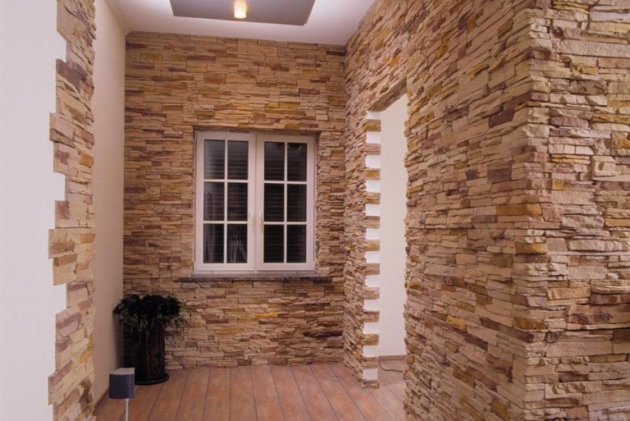
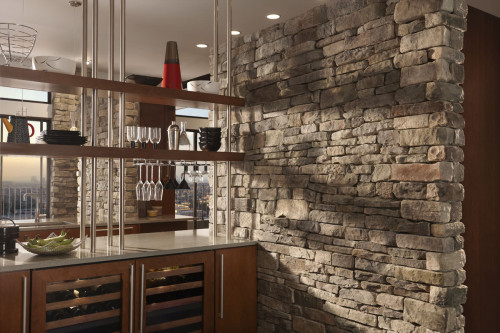

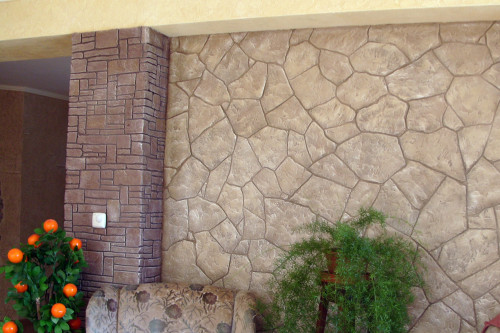
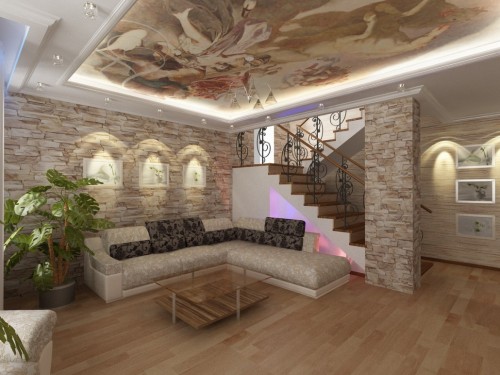
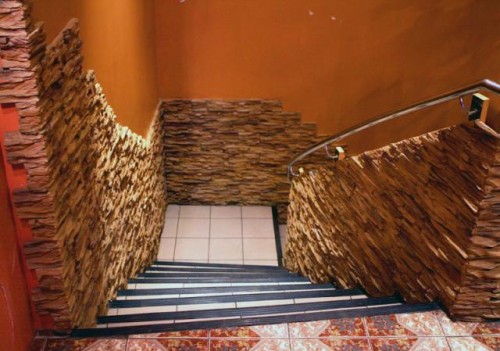
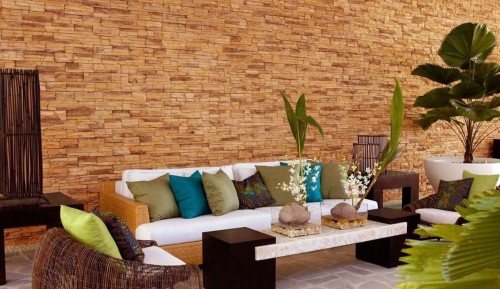
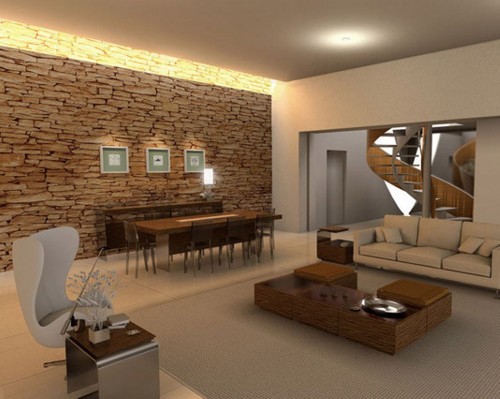
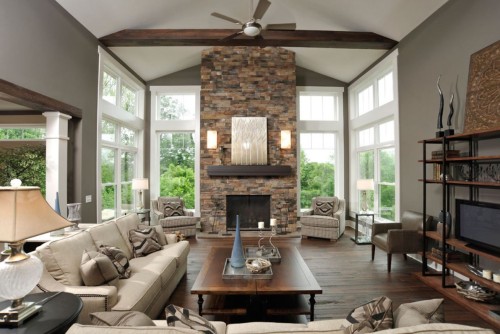
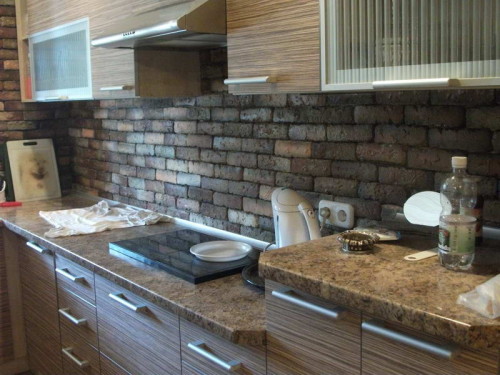

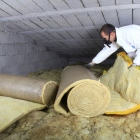
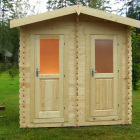

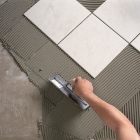



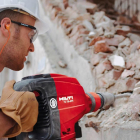

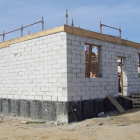
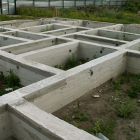
 Start a discussion ...
Start a discussion ...